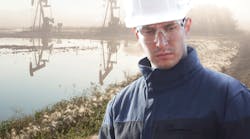Workrite Uniform Co.
The weather may be getting colder, but the risk of thermal hazards such as flash fire and arc flash still is just as significant, and selecting the right flame-resistant (FR) outerwear is essential to keeping workers safe. Workrite Uniform Co. recommends the following considerations for evaluating FR outerwear options.
- Compatibility with standards – The first and foremost consideration when selecting FR outerwear, or any type of FR clothing, always should be safety. Be sure to select FR outerwear that is designed to meet or exceed all relevant safety standards, such as NFPA 2112 and NFPA 70E. These standards, among others, are a great place to learn about the levels of FR protection required in various work environments.
- Temperature rating – Some types of FR outerwear significantly are warmer than others, and selecting garments that offer the appropriate level of warmth helps ensure the outerwear will be worn consistently and compliantly. Depending on the manufacturer and style, some FR outerwear comes with a temperature rating to help you gauge the climates for which it is best suited. In the absence of a temperature rating, fabric type and weight provide some indication of how warm FR outerwear will be.
- Breathability and moisture management – In cold environments, outerwear that traps moisture on the skin not only is uncomfortable, but also potentially dangerous. If excessive moisture remains on the skin, it can cause chilling and even hypothermia. FR outerwear made from moisture-wicking fabrics can help prevent this issue. However, it also is important to look for garments that allow sufficient breathability to prevent workers from overheating and further reduce the likelihood of trapped moisture.
- Ease of movement – If FR outerwear makes workers uncomfortable or impairs their job performance, they are less likely to wear it and, therefore, less likely to have the protection they need if an accident occurs. Ease of movement is vital to comfort, so it is important to look for garments that are designed with features such as action backs to promote a wide range of motion.
- Added features – Small details can make a big difference in the performance of FR outerwear. Features such as water-resistant finishes, comfort-enhancing knit cuffs, zip-in hoods, elastic waistbands and beyond can improve the functionality of FR outerwear as well as workers’ satisfaction with the garments.
To see first-hand what happens if non-FR outerwear is exposed to flame, watch this video from Workrite Uniform Co.
Voice your opinion!
Voice your opinion!

